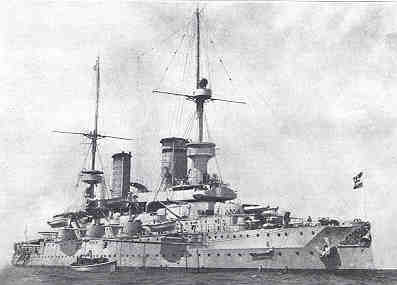A Capital Ship on an Ocean Trip
Today, let's talk about battleships. The University of Houston's College of Engineering presents this series about the machines that make our civilization run, and the people whose ingenuity created them.
A capital ship
For an ocean trip
Was the Walloping Window Blind.
No wind that blew
Dismayed her crew,
Or troubled the captain's mind.
So goes an old children's rhyme. A capital ship was a major warship - an 18th century ship-of-the-line or a more modern battleship. When I was a child, singing this song, battleships were the grandest machines afloat. All the major nations built them. Some weighed over 70,000 tons. The British named one, Dreadnought, and that name soon applied to all battleships. Surely such an engine of war had naught to dread from anyone. As many as nine of its big guns might be as much as eighteen inches in diameter.
Now historian Garcia Rodriguez y Robertson looks more closely at battleships. They've joined only a few great battles. In 1898, the American Navy scored a one-sided victory over the Spanish at Santiago, Cuba. They destroyed a Spanish squadron with no loss of American life and the battleship was hero of the day.
But records of shots fired and hits scored tell a different story. The Americans fired 6000 rounds. Only 130 of those hit anything and only two hits out of 6000 rounds came from big battleship guns. Those two did only topside damage. Similar stories come out of other modern naval artillery duels.
My 1970 Encyclopaedia Britannica says those big guns could hit a target with great precision at twenty-five miles. They could not. Consider the problem: To do damage, a shell must land perpendicular to a ship's armor. A big shell coming in twenty degrees off perpendicular wouldn't penetrate the nine-inch armor protecting most battleships at the water-line. At long distances shells come down in an arc. The chances of hitting anything become vanishingly small, and long-range hits necessarily deal glancing blows.
Battleships are vulnerable to torpedoes. When they explode outside the hull, below the waterline, water focuses the explosion into the hull. A quarter-million tons of battleships were lost to torpedoes in WW-I. And battleships did more damage blundering into friendly small craft than they did shooting at enemy torpedo boats.
In 1921 British and American representatives met in Washington where they agreed to call a moratorium on capital ship building. The traditional military cried out its objections. Later, the conference was blamed for leaving us unready in 1941. In fact, what we'd done was turn our attention to aircraft carriers and submarines. The conference may've saved us.
That capital ship on an ocean trip really was a child's dream. We've always imagined sitting off at a safe distance and pounding an enemy into submission. In the end, that dream has always been no more than the sound of the walloping window blind.
I'm John Lienhard, at the University of Houston, where we're interested in the way inventive minds work.
(Theme music)
Garcia y Robertson, R., Failure of the Heavy Gun at Sea, 1898-1922. Technology and Culture, Vol. 28, No. 3, July 1987, pp. 539-557.

The pre-WW-I German Battleship, Kaiser Frederick III
(from the 1911 Encyclopaedia Britannica.)